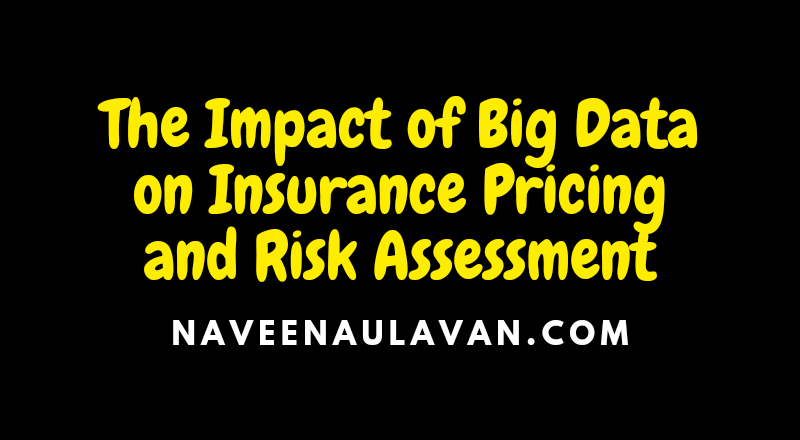The advent of big data has revolutionized various industries, and the insurance sector is no exception. With the availability of vast amounts of data and advances in data analytics technologies, insurance companies are now able to better assess risks and price their products more accurately. This article explores the impact of big data on insurance pricing and risk assessment and discusses its implications for the industry.
Understanding Big Data
Big data refers to the massive volumes of structured and unstructured data that organizations generate and collect from multiple sources. The characteristics of big data are often described using the 3Vs: volume, velocity, and variety. Volume refers to the enormous amounts of data collected, velocity represents the speed at which data is generated, and variety pertains to the different types and sources of data.
Application of Big Data in Insurance Pricing
1. Improved Risk Assessment
Big data analytics enables insurance companies to gather and analyze a wide range of data, such as customer profiles, claim histories, credit scores, social media activity, and even weather patterns. By leveraging this data, insurers can develop more accurate risk profiles for individual policyholders. This allows them to better identify high-risk individuals and adjust insurance premiums accordingly.
2. Personalized Pricing
Traditionally, insurance pricing has been based on generalized risk pools, leading to some policyholders subsidizing others. However, big data analytics allows insurers to develop more personalized pricing models. By analyzing individual data points, such as driving behavior in auto insurance or lifestyle choices in health insurance, insurers can offer customized pricing that aligns with each policyholder’s specific risk profile. This approach promotes fairness and transparency in insurance pricing.
Benefits and Challenges
1. Benefits of Big Data in Insurance Pricing
– More accurate risk assessment: Big data analytics enables insurers to identify and evaluate risk factors with greater precision, leading to more accurate pricing.
– Enhanced fraud detection: By analyzing large volumes of data, insurers can detect suspicious patterns and identify potential fraudsters, helping to reduce fraudulent claims.
– Improved customer experiences: Personalized pricing based on individual risk profiles allows insurers to offer tailored coverage options and pricing plans, enhancing customer satisfaction.
2. Challenges of Big Data in Insurance Pricing
– Data privacy concerns: As insurers collect and analyze extensive amounts of personal data, privacy concerns arise. Striking a balance between utilizing data for risk assessment and protecting individual privacy is an ongoing challenge.
– Data quality and integrity: The accuracy and integrity of the data used for pricing purposes are crucial. Ensuring that data is up-to-date, relevant, and reliable is a significant challenge for insurance organizations.
– Regulatory compliance: Insurance companies must adhere to industry regulations and standards when handling sensitive customer data. Compliance with data protection and privacy laws adds another layer of complexity.
The Future of Big Data in Insurance Pricing and Risk Assessment
The use of big data in insurance pricing and risk assessment is expected to continue growing. Advances in machine learning and artificial intelligence will further enhance the capabilities of data analytics, allowing insurers to gain deeper insights into risk profiles and make more informed pricing decisions. Additionally, the integration of real-time data streams, such as IoT devices, can enable insurers to offer usage-based insurance policies, rewarding policyholders for safer behaviors or lower risk activities.
Conclusion
The impact of big data on insurance pricing and risk assessment cannot be understated. With the ability to analyze massive amounts of data, insurers can now develop more accurate risk profiles and offer personalized pricing, benefiting both policyholders and the industry as a whole. Although challenges exist regarding data privacy and quality, the future of big data in insurance pricing looks promising. As technology continues to evolve, insurers will undoubtedly find new ways to leverage data to improve risk assessment and ultimately provide better insurance products to customers.
